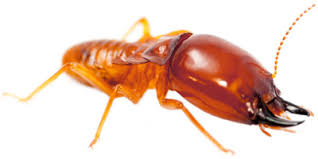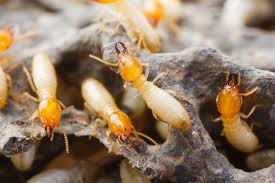10 Easy Facts About Termite Control Review Shown
This page describes the three kinds of subterranean termite, drywood and dampwood.
Termites are categorized according to their nesting and feeding habits: dampwood, drywood and subterranean.
Subterranean termites are the most frequent type of termite that infests wood in structures and are one of the most destructive pests worldwide. Outdoors they infest timber that is dead in contact with the dirt, such as stumps, trees and fallen branches. They prefer although they can digest sound wood, wood which has some degree of rot which makes it easier for them to digest it. .
Not known Facts About Termite Control Review
Subterranean termites will need to be to survive, making their nests in or close to where moisture can be easily acquired by them in the ground. They tunnel through dirt to access wood or moist soil and that they tunnel to reach moisture. .
Soil is used by the termites as a material to construct nests and shelter tubes, which can be made up of faeces, wood, dirt and saliva. Some species build carton nests above ground and construct shelter tubes (also referred to as sand tubes) to link the nest to the ground.
Foraging is dependent on the weather, with activity in winter or conditions and action in summer after rainfall. In tropical areas they could forage throughout the year, with peaks through warmer conditions.
The Of Termite Control Review
Drywood termites reside inside pieces of timber, wholly in colonies less than 1000 individuals. There may be tiny colonies such as a piece of furniture within a single piece of timber or object. They could feed across rings as is subterranean termites so the galleries don't follow the grain of timber, however they are inclined to steer clear of heartwood.

Colonies can grow for many years undetected until even the swarm or the timber breaks. The winged alates, which would be the casts that leave the nest, might not be produced for years in a colony that was brand new before the population reaches a critical point. Then they leave the nest find a site to mate and start a new colony, generally not far from the parent colony and to set up. .
Decayed timber that stays moist due to contact or, for instance, through a water leak in a construction is normally infested by termites. They are likely to infest timber that is outside, such as a tree, stump or logs in contact.

Termite Control Services In Adelaide - The Facts
Dampwood termites live completely they feed on and make open galleries. As with drywood termites, they may infest wood for years until they are found, which is most likely when the alates swarm from a mature colony. Swarming may occur over a few months, with species swarming at distinct times.
They are an indication of a moisture issue, if they're observed in a building. By removing the source of moisture they are minor pests and can be controlled in buildings. In trees that are live they have a tendency to feed on wood that is dead and rotting.
Species can be tricky to identify, even for the specialists. Identification is usually dependent on the soldiers, which is the caste that has the features that were most readily distinguishable.
Of the pest species listed above, it is.
The 8-Minute Rule for Termite Control Services In Adelaide
The head of the soldier is yellowish and rectangular with darker thin mandibles. Body is up to 7 mm long. It's easily confused with two other indigenous Coptotermes species, C. frenchi and C. lacteus (Victoria Museum)
The soldiers generate a white sticky liquid out of a opening (fontanelle) on the front of head when defending the nest from attack.
Mounds are not typically built by get redirected here coptotermes species, except in other tropical areas of Australia and Queensland. They largely stumps, nests in trees, poles, buried timber under buildings spaces, around homes and in walls. Trees for nesting are oaks , various eucalypts and peppercorns. The colony is found at the part of their trunk or the root crown.
Get This Report on Termite Control Specialists
Coptotermes acinaciformis is the termite species in Australia overall, although Mastotermes darwiniensis is the locally across its limited range in northern Australia. C. acinaciformis attacks all timber structures and obligations forest and ornamental trees in addition to fruit trees.